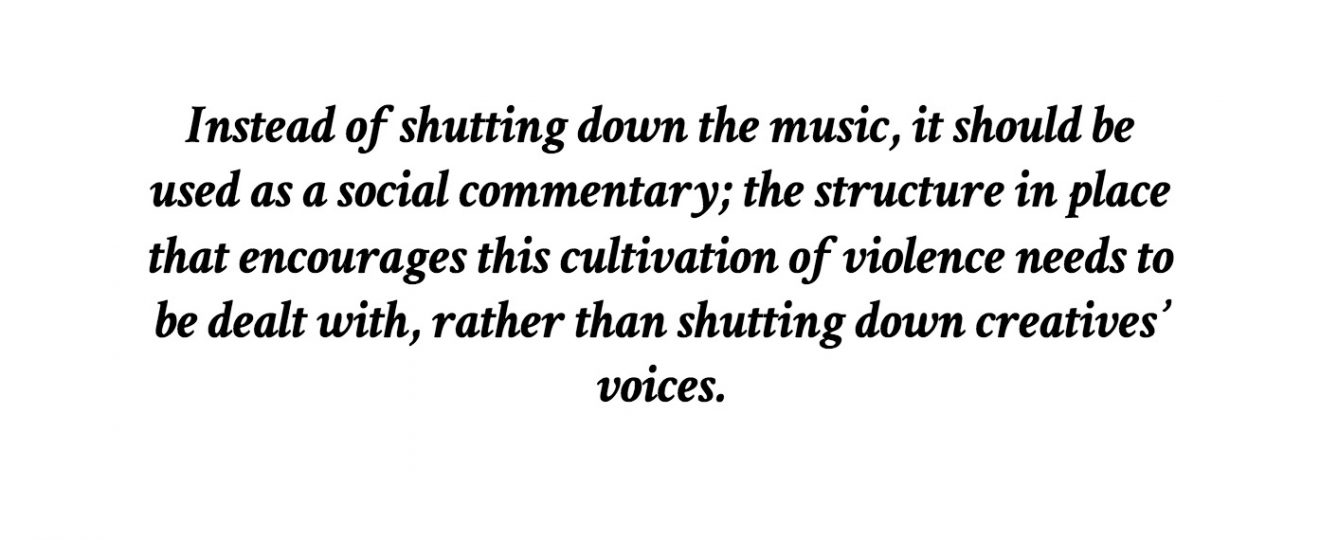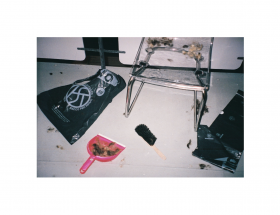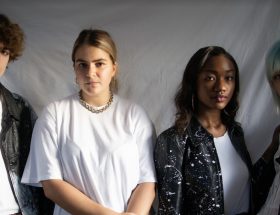With both Headie One and DigDat landing their tunes in the charts, as well as Homerton B by Unknown T and Gun Lean by Russ splash smashing the clubs, it’s safe to say that UK drill has hit the mainstream. The genre of drill was born in the south side of Chicago circa 2010; a cold style of gangsta rap which London’s MCs have picked up to define themselves as a new generation moving away from grime. Rather than finding its roots in African pop or dancehall, as reflected in the recent surfacing of afro-bashment, drill artists have found inspiration in spitting bars of tales of violence, like US rap has done since the 90s.
However, whilst the genre climbs in popular culture, it is continuously dragged down by the authorities. Drill has been accused of reinforcing the violence it often describes, popularly being used as a scapegoat for the rising problem of knife crime in London. Authorities have been testing the boundaries of censorship. YouTube has been periodically removing drill music videos: the Drill crew 1011 were banned from making music without police permission in June, and most controversially the duo Skengdo x AM received a nine-month suspended jail sentence in January for breaching an interim gang injunction that stopped them from performing live after the Metropolitan police accused them of ‘[performing] drill music that incited and encouraged violence’. The Skengdo x AM case especially has received backlash from UK civil rights groups; one group wrote an open letter to the Met police condemning this suppression as ‘silencing one of the few avenues, through threat of criminalisation, by which young people can discuss the reality of their lives with any hope of being heard’, and calling it ‘structurally racist’. The key debate arising from these event follows: do violent lyrics reflect an honest social reality and genuinely empower its artists? Or do they inflame the issues they describe? Is the music the divider, or the system which disenfranchised people are subjected to?
In April, Dimzy, a member of the popular drill crew 67 tweeted:
‘They Say Drill Music Is Why All The kids Are dying today Iyt Kool But I Was In Primary School When I Saw Someone Gushing With Blood What Was The Influence Then?’.
Drill music being blamed for the violence that has long been occurring is irrational. Instead of shutting down the music, it should be used as a social commentary; the structure in place that encourages this cultivation of violence needs to be dealt with, rather than shutting down creatives’ voices. Index on Censorship chief executive Jodie Ginsberg recognises and emphasises this, stating: ‘Banning a kind of music is not the way to handle ideas or opinions that are distasteful or disturbing. This isn’t going to address the issues that lead to the creation of this kind of music, nor should we be creating a precedent in which certain forms of art which include violent images or ideas are banned. We need to tackle actual violence, not ideas and opinions.’
Recently in an interview with Annie Mac on BBC Radio 1, Giggs, one of the biggest names in UK rap, shared his thoughts on the subject:
‘They talk about drill… it’s bad for the kids, blah blah blah. But all I’m seeing is yutes getting off the streets. I weren’t seeing that before at all. The violence has always been there… violence before, no results. But now there’s violence, but at the same time but at the same time half the yutes are getting off the streets, and they’re just doing what they love. … following their dreams.’
When trying to launch a music career after spending two years in prison after being found bearing arms in 2003, Giggs himself found it near to impossible to perform in London for a large part of his career, the link of his criminal past with his production of road rap and grime making him a target for the police. Thus, the interference of the Met police with the underground music scene in London is not anything new. The treatment of drill massively echoes the treatment of grime: grime artists were terrorised by the 696 risk assessment form, which the Met police ordered event organisers and club spaces to fill out. Not only did the police use the form to root out grime raves and shut them down, but it was structurally racist; until 2009 it asked organisers for the ethnicity of likely clientele attending the events. The form was only revoked in 2017 by Mayor Sadiq Khan, who noted that grime has ‘the same significance for today’s young people as punk did in the 1970s, empowering them, creating a new generation of musical heroes and growing to become a worldwide phenomenon’.
As a result of its suppression, in the time from the genre’s creation in the early 2000s to now, it has died, resurfaced and been accepted into the mainstream. Drill needs this same space to grow and evolve into a genre for wider public consumption. This is now underway with drill’s leading figures diversifying and often softening their sound, shown by Headie One and DigDat’s tunes permeating the charts. Monkey from 67 reiterated in a 2017 interview that the group ‘…is not a gang. This is a logo. This is a company. This is a brand.’ Drill artists need to be accepted as musicians in their craft, instead of being painted as a burden to society and contributing to knife crime, of which they are not the direct cause. To answer all those accusing the genre of inciting violence, the roots of drill need to be examined and the societal structure needs to be subverted to find actual solutions to this problem.




